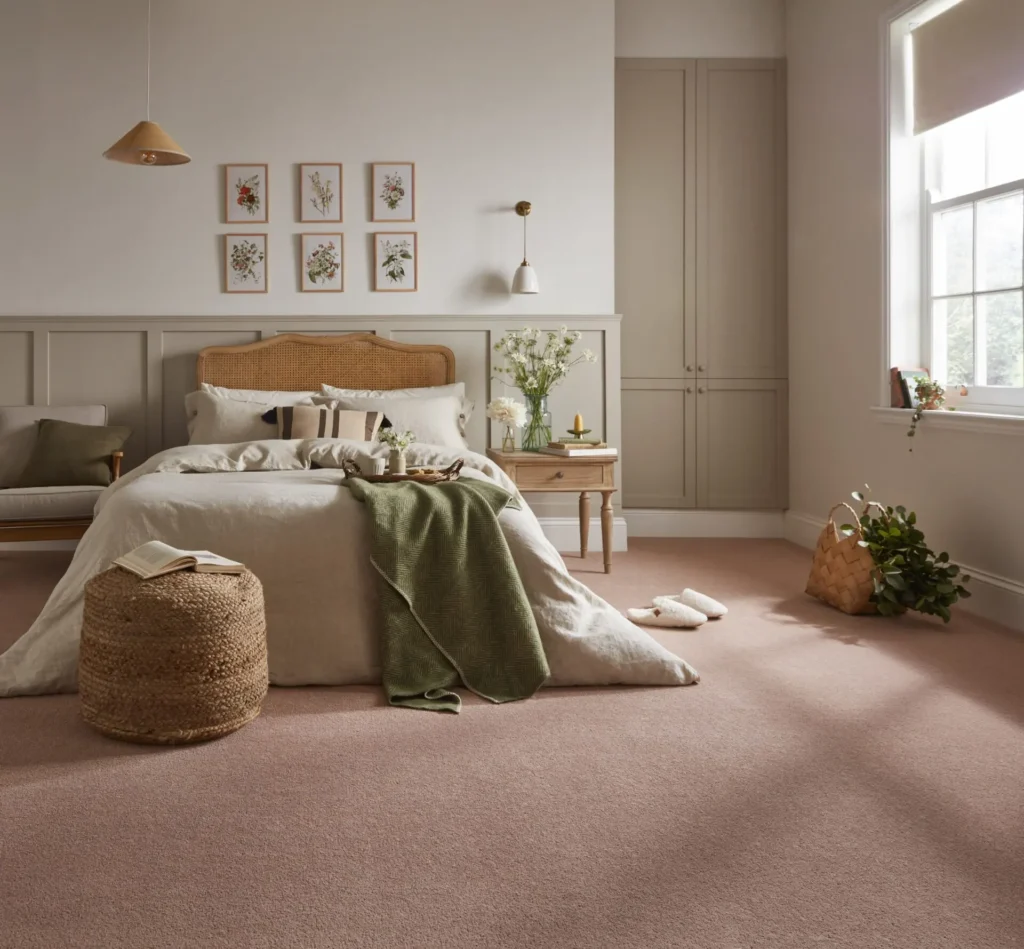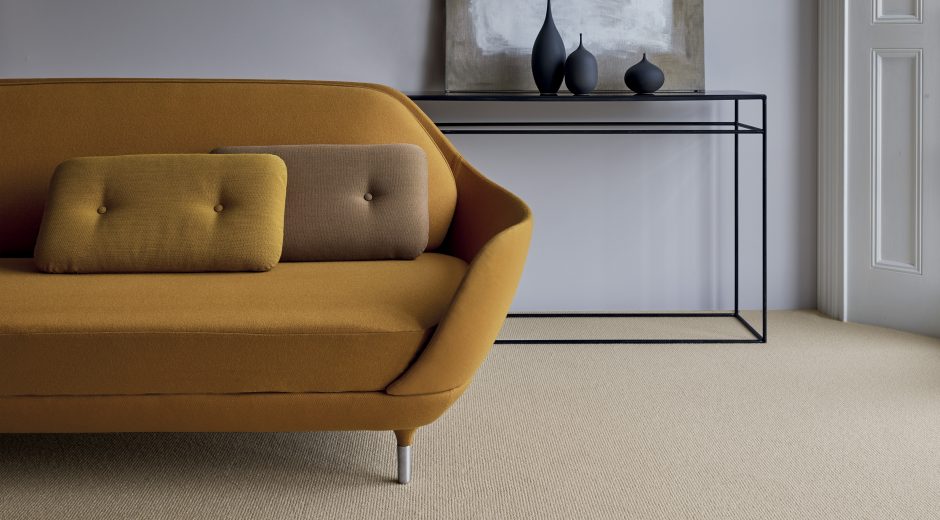Debunking the moth myths
With so many different brands out there (and some clever marketing) it can get confusing as to know which carpet is actually going to stand the test of time with these pesky creatures.
Moths can do irreversible damage to your carpets, and it doesn’t take long for the carpet to become threadbare and unsightly. But can we prevent it from getting to that stage? Understanding which carpets are moth-proof and moth-resistant can help prevent a moth infestation in your home.
What causes carpet moths?
There are several reasons why carpet moths might start infesting your home, and understanding their sources can help you prevent them from damaging your carpets.
One common reason is that moths seek out places to lay their eggs. Carpeting made of natural fibres like wool provides an ideal environment for moth larvae to thrive.
Another reason for carpet moth infestations is inadequate carpet cleaning. Irregular vacuuming or cleaning can turn carpets into breeding grounds for moths and other insects. This risk is heightened if you have pets, as their hair and skin can attract moths.
Carpet moths can also be brought into your home on clothing or other fabrics. If you live in an area with a high moth population, they can latch onto your clothes and be transported indoors. The difference between moth-proof and moth-resistant carpets lies in the level of protection they offer against moth damage.


Moth-Proof Carpets:
- Definition: Carpets that are treated to completely prevent moths and other insects from feeding on them.
- Mechanism: The treatment applied to these carpets makes the keratin (a protein found in wool) indigestible for moths and other insects. Since they can’t convert the keratin into usable food, they eventually starve. This treatment lasts for the carpet’s lifetime and poses no health risks to humans or the environment.
- Brands we stock: Westex carpets, Ulster Axminster, and Wilton carpets.
- Effectiveness: Offers full protection for the carpet’s lifetime, ensuring that moths cannot damage it.
- Additional Benefits: Safe for human health and the environment.




Moth-Resistant Carpets:
- Definition: Carpets that are designed to deter moths, but not necessarily prevent them completely.
- Mechanism: These carpets might be treated with substances that make them less appealing to moths.
- Brands we stock: Adams carpets, Manx Tomkinson, Telenzo, Crucial Trading (only selected carpets from these brands say they are moth-resistant)
- Effectiveness: Provides partial protection; moths may take a small bite but typically do not cause significant damage.
- Limitations: Not as effective as moth-proof carpets in preventing moth damage.




Synthetic and Natural Carpets
These are naturally moth-proof since moths feed on keratin, which is only found in wool products. By default, any man-made carpets are moth-proof because they lack the natural fibres that moths feed on. Similarly, natural plant fibres like sisal, coir, and jute are unattractive to moths.
Can you help prevent carpet moths?
As well as choosing the right carpet there are ways you can help to prevent carpet moths from ruining your carpets. Preventing carpet moths involves a combination of cleanliness, preventive measures, and occasional use of chemical treatments. Here are some steps you can take:
Regular Cleaning
Vacuum Frequently: Vacuum carpets, rugs, and upholstered furniture regularly to remove moth eggs and larvae. Pay extra attention to areas under furniture, along baseboards, and in corners; moths love the darker areas.
Wash Fabric Items: Regularly wash curtains, cushions, and other fabric items. If possible, use hot water and high heat in the dryer to kill any larvae or eggs.
Reduce Humidity
Dehumidify: Use a dehumidifier to reduce the humidity levels in your home, as moths thrive in humid environments.
Improve Ventilation: Ensure good ventilation in storage areas and attics.
Use Natural Repellents
Cedar Products: Use cedar blocks, chips, or essential oil in closets and storage areas. Cedar is a natural moth repellent.
Lavender: Place sachets of dried lavender or lavender oil-infused cotton balls in your wardrobes and storage areas.
Regular Inspections
Check for Signs: Regularly inspect carpets and other fabric items for signs of moth activity, such as small holes, larvae, or moths themselves.
Move Furniture: Occasionally move furniture to vacuum and check underneath for moth activity.
Professional Treatment
Pesticides: If you have a significant infestation, consider using insecticides specifically designed for moth control. Follow the instructions carefully.
Use Moth Traps
By combining these methods, you can effectively prevent carpet moth infestations and protect your home. Regular maintenance and vigilance are key to keeping these pests at bay.
Summary
Choose your carpets wisely…
- Moth-proof carpets provide complete protection against moths, ensuring they cannot feed on or damage the carpet.
- Moth-resistant carpets offer partial deterrence, reducing but not entirely eliminating the risk of moth damage.
- Synthetic carpets are an easy win. Although they may not be as appealing as a natural wool carpet for other reasons, they are entirely moth proof.
- Natural carpets such as sisal, coir and jute are naturally moth repellant
